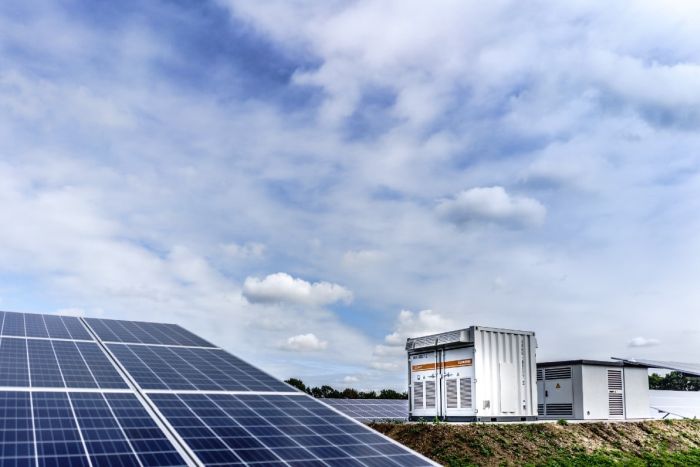Military Goes Green: Initiative to Lessen Carbon Footprint
Rising energy costs brought on by Moscow's invasion of Ukraine are a problem for all businesses and individuals, not just those in Europe. Because the military also depends on civilian energy networks, supply security and price are crucial requirements. The European Defense Agency (EDA) is working harder than ever to support partners and EU defense ministries in creating and implementing cleaner, more sustainable energy models at home. This assistance is a component of a larger plan by the European Union to reduce its dependency on fossil fuels and stop any possible adversary from using energy dependence as a tool for economic warfare. At the EDA Energy Defense Consultation Forum conference in France in June of 2022, EDA Chief Executive Jiří Šedivý declared, "Now more than ever, the EU needs to fast-track the clean transition to avoid being held energy hostage."
Considering this, U.S. Army starts renewable energy initiatives at military installations. The United States Department of Defense (DoD) has the largest energy consumption in the federal government. It consumed 77 percent of the government's total energy in 2021, 15 times more than the U.S. Post Office, the organization in second position. The U.S. military has long prioritized renewable energy, and through its efforts in energy efficiency and environmental sustainability, it has made significant progress in lowering energy consumption and reducing greenhouse gas (GHG) emissions to combat climate change. The U.S. Army unveiled its Climate Strategy in February 2022, which serves as the organization's overall framework for long-term climate adaptation and mitigation. The plan "drives efforts to strengthen readiness, resiliency, and capabilities of the force," according to the branch's statement. The Army will achieve its goals of a resilient and sustainable land force capable of operating in all domains with efficient adaptation and mitigation measures against climate change by putting the lines of effort (LOE) outlined in the Army Climate Strategy into practice, in line with Army modernization efforts.

The DoD is constructing renewable energy and storage microgrid projects for military sites across the nation to address the energy crisis. For instance, the U.S. Army and California National Guard at the Joint Forces Training Base in Los Alamitos, the Army Corps of Engineers started building a 51-megawatt (MW), solar and storage microgrid project in May. The project will span 99 acres. The Los Alamitos Microgrid will be made up of a 3-MW diesel backup generator, a 20-MW/40-MWh energy storage system, and 28 MW of solar photovoltaic power. Bright Canyon Energy, which is developing the microgrid with private funding, will construct, own, and run it. Once in operation, the technology can keep the base's electricity running for up to 14 days while isolating it from the main grid. By the summer of 2023, the facility is anticipated to be ready for use.
A microgrid system is being developed in Humboldt County, which is located along the untamed northern California coast, to support the Redwood Coast Airport and the U.S. Coast Guard Sector Humboldt Bay Air Station. From Sonoma County to Oregon, the Coast Guard station patrols hundreds of miles of coastline. The microgrid is the first multi-customer, front-of-the-meter microgrid in the service area of Pacific Gas & Electric (PG&E).

Meanwhile, Europe is also not lagging behind. The initiative called Military Green is now being launched to lessen our carbon footprint. Military Green expands on existing laws and EU regulations. It makes even more profit through the new Environmental Protection Concept. The EU Military Staff is developing the Concept, which intends to define the guidelines and accountability for upholding environmental protection standards across EU-led military operations. Funding comes from private investment, which is at no burden on the taxpayer. Once proven, the GO GREEN model can be applied across the EU and expanded to additional renewable energy sources. The range of EDA's actions entails increasing energy efficiency by utilizing cutting-edge energy supply technologies alongside traditional ones in smart grids that span all land, sea, and air services and all system levels, down to the nanoscale. Focus areas include dependence on fossil fuels, alternative and renewable energy sources, power storage, effective distribution and conversion, and energy management. Another angle is examining the effects on ecology and the environment, compiling impact statistics, and offering advice on eco-friendly design. Areas of attention are statistics on energy use and green design principles, and biological impacts of exposure to auditory and electromagnetic waves.
The moment has come to address climate change. Supply chains have suffered as a result of climate change, our infrastructure has been harmed, and threats to Army soldiers and their families from natural disasters and harsh weather have increased. In order to mitigate climate threats, the Army must adjust across the board and actively seek ways to cut greenhouse gas emissions. Our options to reduce these hazards will grow more limited with each passing year if we do not take immediate action throughout our installations, acquisition and logistics, and training.
